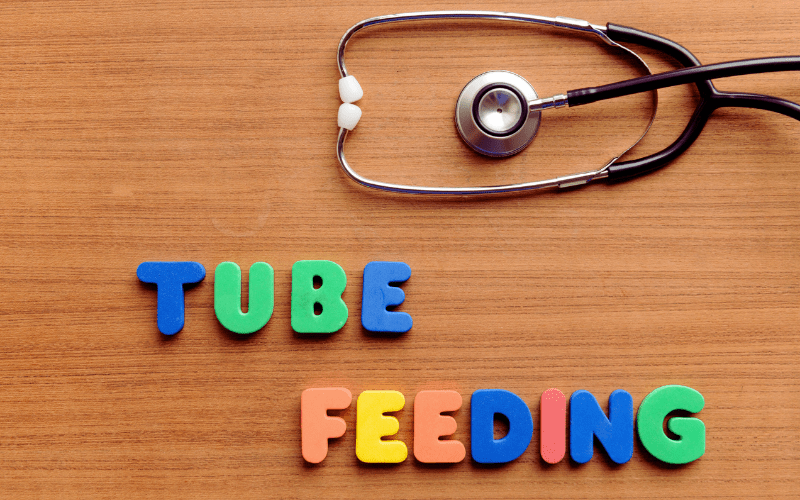How to Improve Feeding Tube Placement Accuracy in High-Risk Patients
Don Marcello

Accurate NG/OG tube placement is critical in high-risk care. For patients in ICUs, NICUs, and other vulnerable settings, a misplaced tube can lead to complications such as aspiration pneumonia—or in severe cases, death. That’s why hospitals are moving away from outdated methods and adopting faster, safer, evidence-based approaches like gastric pH testing.
The Challenge of Feeding Tube Placement in Vulnerable Populations
Patients with complex anatomy, compromised respiratory function, or fragile physiology face greater risks during feeding tube insertion. Whether you’re treating neonates, elderly adults, or post-surgical ICU patients, traditional confirmation methods may fall short.
X-rays cause treatment delays and radiation exposure. And techniques like auscultation—which relies on hearing air sounds in the stomach—are prone to error and have no clinical evidence to support their effectiveness. Leading healthcare organizations have asserted that auscultation should no longer be used.
What clinicians need are placement verification tools that:
- Work at the bedside
- Provide fast, objective results
- Reduce radiation and complication risks
- Adapt to different patient populations
- Support smarter protocols across departments
Evidence-Based Methods for Accurate Tube Placement
Gastric pH Testing: The Gold Standard
Gastric pH testing offers a fast, evidence-based alternative to traditional methods. The stomach’s acidic environment (typically pH 1–5.5) is a built-in biological marker. When aspirate from the tube falls within that range, clinicians can confidently confirm placement—without the need for imaging or guesswork.
Using tools like the RightSpotpH® Indicator, you get:
- Immediate results at the bedside
- Objective confirmation of placement
- Fewer X-rays and less radiation exposure
- Faster treatment initiation
- Protection against preventable complications
Using gastric pH to confirm tube placement is now the first-line approach in the UK and is emerging as such in the US.
When Additional Verification Is Needed

While pH testing is highly reliable, some situations may call for a secondary method—particularly when:
- Patients are on acid-suppressing medications
- There’s difficulty obtaining aspirate
- pH readings fall outside the expected range
In those cases, clinicians may turn to X-ray confirmation, but the key is using pH testing as your default strategy, with X-rays only when necessary.
Special Considerations in Vulnerable Populations
Neonatal and Pediatric Patients
Neonates are especially vulnerable to feeding tube misplacement and therefore need specialized care. Their small size, developing systems, and frequent need for verification make traditional methods impractical or risky.
The RightSpotpH® SmallBore Indicator was designed for this population, offering:
- Accurate pH confirmation with minimal aspirate volume
- Radiation-free verification
- Compatibility with tubes 10Fr or smaller
- A simplified process for NICU workflows
ICU Patients
In the ICU, feeding tube verification often competes with ventilators, lines, and ongoing critical care needs. X-ray transport may not be feasible, and care decisions can’t wait.
With pH testing:
- Verification happens in seconds—right at the bedside
- Staff avoid radiology delays and reduce patient risk
- Treatment can proceed without waiting on imaging
- Care teams gain confidence in placement, even in unstable patients
Implementation Best Practices
Hospitals can improve safety and efficiency by integrating these steps:
Standardize Protocols
Adopt a facility-wide protocol that uses pH testing as the first-line method, with clearly defined thresholds and backup strategies for inconclusive readings.
Train Your Teams
Ensure all clinicians responsible for tube placement and verification are trained and competent in using pH indicators. Include hands-on practice and regular refreshers.
Choose the Right Tools
Different departments have different needs. Equip each unit with the RightSpotpH® device that matches their patient population—whether adult, neonatal, or ENFit-compatible.
Verify Routinely
Reconfirm placement:
- Immediately after insertion
- Before every feeding or medication
- After events like coughing, vomiting, or transport
Document Clearly
Record pH values, methods used, and outcomes in the patient chart. Consistent documentation improves safety and supports quality initiatives.
The RightSpotpH® Advantage
Designed by physicians in emergency and gastroenterology care, the RightSpotpH® Indicator family helps facilities improve safety and streamline workflows—without adding cost or complexity.
These FDA-cleared, CLIA-waived devices:
- Deliver rapid, reliable pH confirmation at the bedside
- Help reduce radiation and imaging costs
- Support safer care for high-risk populations
- Come in multiple formats for different tube types and clinical needs
See It in Action
Want to explore how the RightSpotpH® Indicator can improve safety and reduce verification delays in your NICU, ICU, or general care units? Let’s schedule a live demo and walk through the implementation process together.
Frequently Asked Questions
What’s the most reliable way to confirm NG/OG tube placement?
Gastric pH testing offers fast, reliable confirmation using the stomach’s acidic environment as a natural marker. It’s supported by current clinical guidelines as a preferred first-line method.
How does pH testing compare to X-ray?
pH testing provides immediate, radiation-free results. X-rays remain useful for complex or inconclusive cases, but shouldn’t be the default.
Can RightSpotpH® indicators be used for all patient populations?
Yes. The product line includes standard, ENFit-compatible, and SmallBore versions designed for adults, neonates, and pediatric patients.
How often should feeding tube placement be verified?
Feeding tube placement should be verified immediately after insertion and before administering any feeding solution, medication or other substances. Additional verification is recommended after any event that might potentially dislodge the tube, such as patient transport, significant movement or if the patient exhibits signs that might indicate tube displacement.
What pH range indicates proper gastric placement?
A reading of 5.5 or lower typically indicates the tube is in the stomach. Higher values may call for reassessment or secondary confirmation.
Are there any patient conditions that affect pH testing accuracy?
Certain medications, particularly those that reduce gastric acid production like proton pump inhibitors, can raise gastric pH levels. In these cases, the pH reading might be higher than expected even with correct placement. Healthcare providers should consider the patient’s medication regimen when interpreting pH results and may need additional verification methods when necessary.

